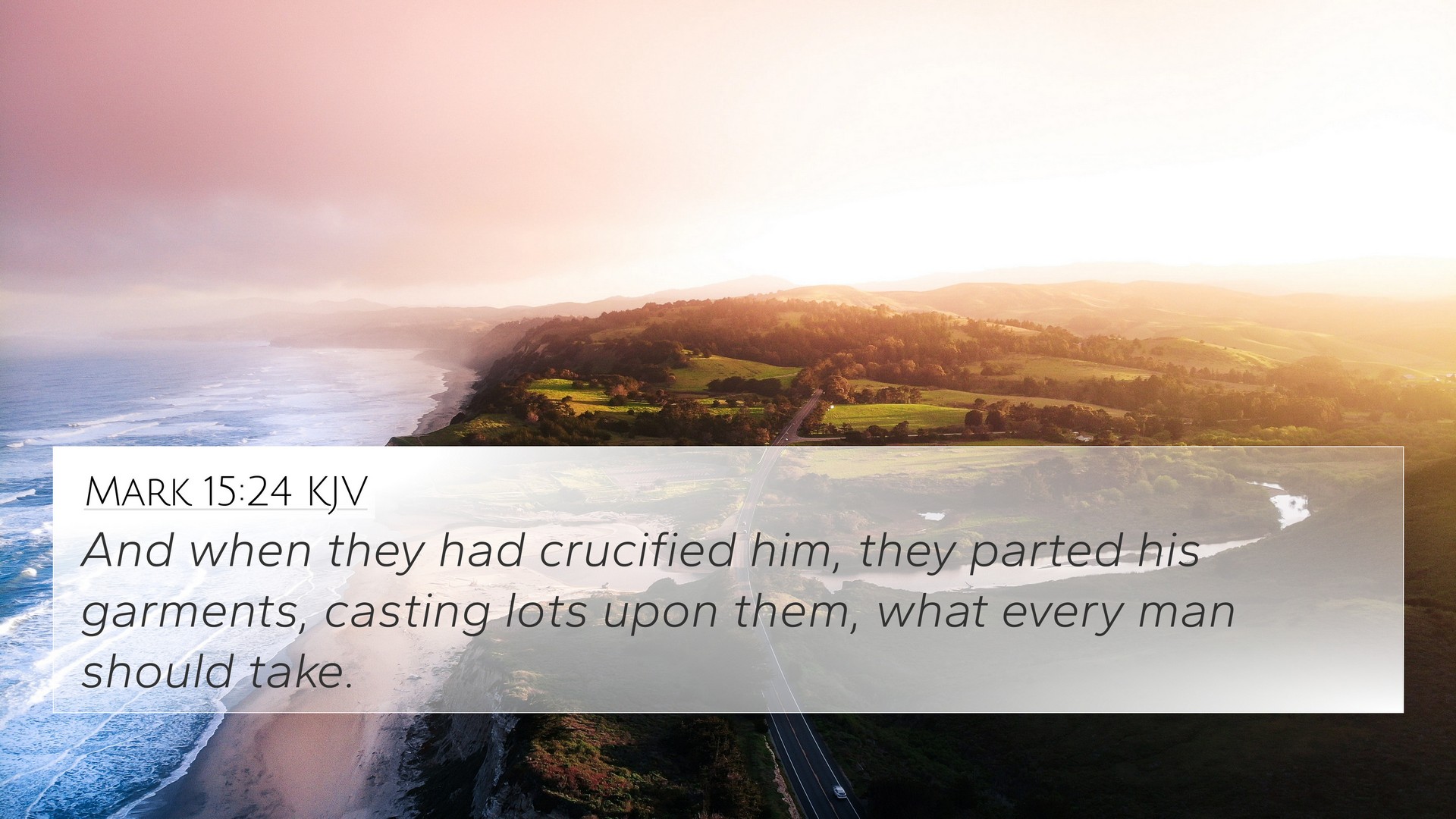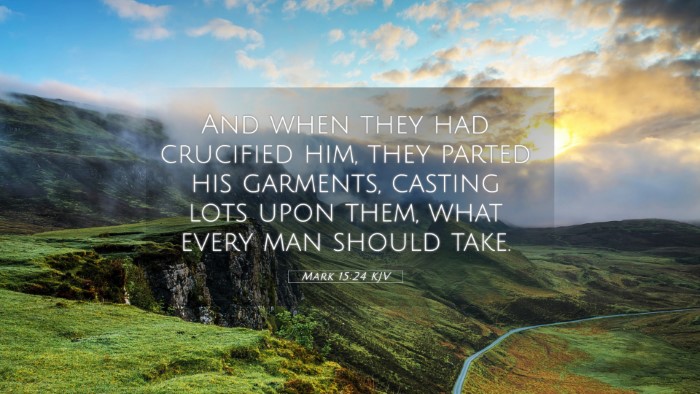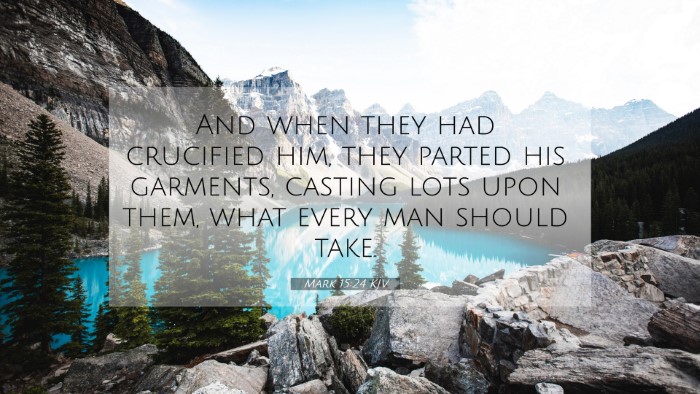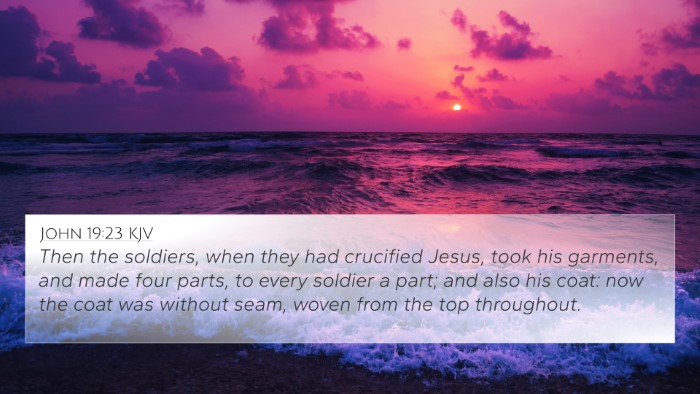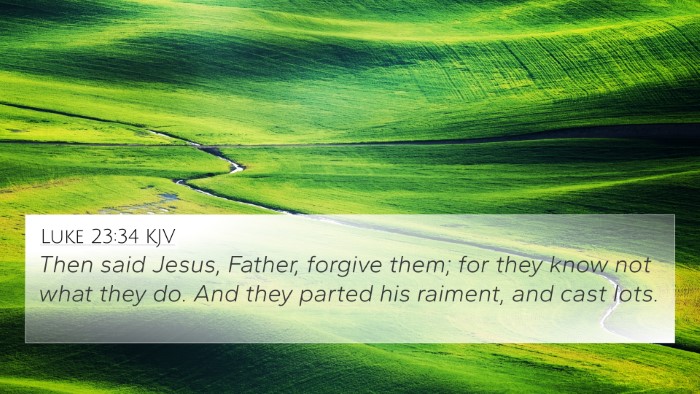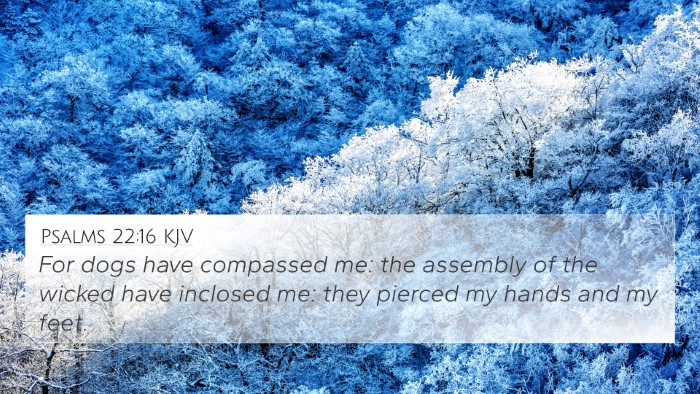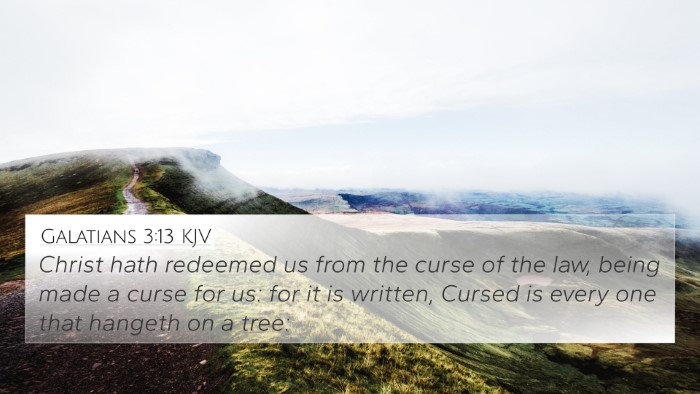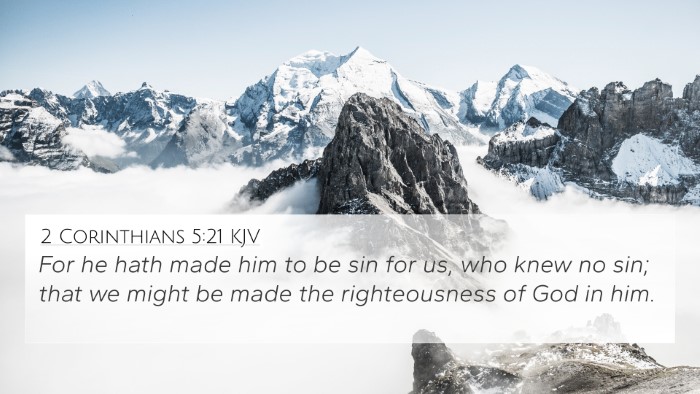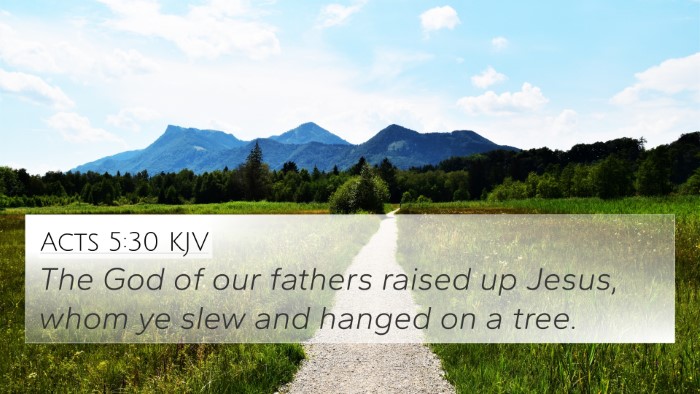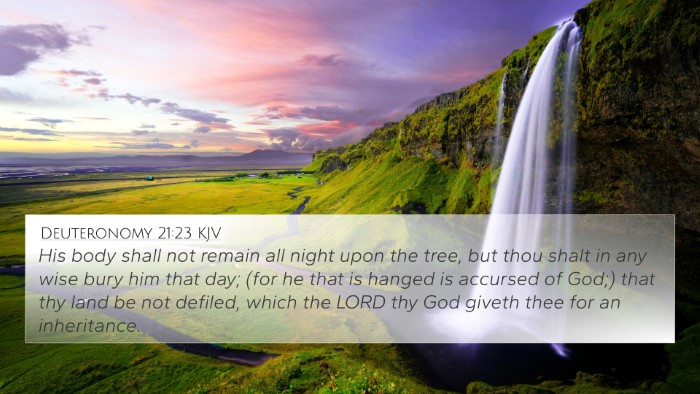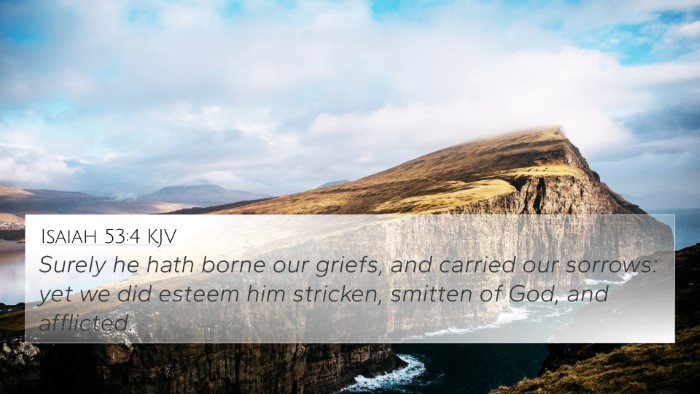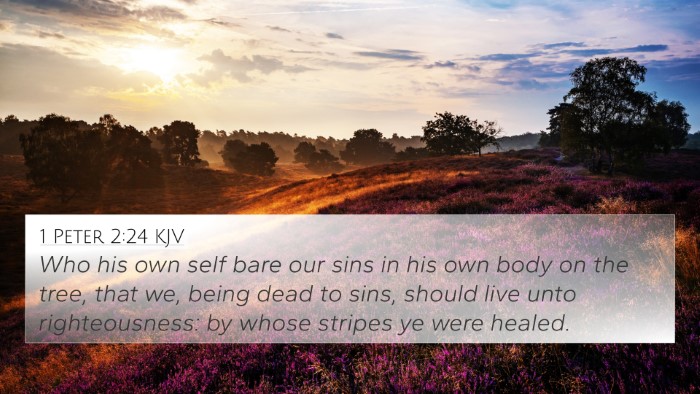Understanding Mark 15:24
Mark 15:24 states: "And when they had crucified him, they parted his garments, casting lots upon them, what every man should take." This verse is a pivotal moment in the New Testament, marking the culmination of Jesus' earthly ministry and His sacrificial death. It provides deep theological implications that resonate throughout Scripture.
Verse Context and Significance
This event occurs during the crucifixion of Jesus, signifying not only the physical act of His death but also the spiritual ramifications it holds for humanity. The act of casting lots for His garments illustrates the fulfillment of prophetic scripture and the indifference of those who crucified Him.
Thematic Analysis
- Fulfillment of Prophecy: The casting of lots for Jesus' clothing aligns with Psalms 22:18, showcasing how Old Testament prophecies foretell events in the life of Christ.
- Indifference and Mockery: This scene reflects the mockery of Jesus by the Roman soldiers, revealing human cruelty juxtaposed with divine purpose.
- Human Separation from God: The act of crucifixion represents the ultimate separation between God and man due to sin, which Jesus came to redeem.
Commentary Insights
Matthew Henry comments on the cruel nature of the soldiers engaging in gambling for Jesus' garments. He emphasizes how they were more concerned with their trivial pursuits than the enormity of the act they were committing, which was crucifying the Son of God.
Albert Barnes notes that this action serves as a representation of the fulfillment of prophecy, connecting the event with the larger narrative of salvation history, and underscores the providence of God in Jesus' suffering.
Adam Clarke highlights the significance of Jesus' garments in the culture of the time, suggesting that the soldiers' actions symbolize the disregard for Jesus' life and dignity. He also points towards how this moment exemplifies the great transaction of Christ's sacrifice for the sins of mankind.
Bible Cross-References
Mark 15:24 has intricate connections with several other scriptures:
- Psalms 22:18 - A prophetic text describing the dividing of garments.
- Isaiah 53:3-5 - Foretelling the suffering servant bearing our griefs.
- Matthew 27:35 - A parallel account of the crucifixion event.
- John 19:23-24 - Details surrounding the garments of Jesus during the crucifixion.
- Hebrews 9:26 - Christ appearing to put away sin by the sacrifice of Himself.
- Revelation 1:7 - The revelation of Christ’s coming, connecting to His sacrificial death.
- 1 Peter 2:24 - References Jesus bearing our sins in His body on the tree.
The Unity of Scripture
The connections between these verses illustrate a cohesive narrative in Scripture regarding the theme of redemption. By understanding these linkages, one reaches a greater depth in study and application of God's Word.
Tools for Bible Cross-Referencing
For those delving into the Bible, tools such as a Bible concordance or a cross-reference Bible study guide can be incredibly helpful. These resources provide a system for cross-referencing Biblical texts, allowing for a deeper exploration of thematic connections within the Bible.
Conclusion
In conclusion, Mark 15:24 is a powerful verse that not only reveals the depths of human cruelty but also the profound love of Christ in His sacrifice. Through comprehensive studies and cross-references, we can uncover the rich theological implications woven throughout Scripture. The examination of such verses invites believers to engage with the grand narrative of salvation and the interconnectedness of God’s purpose as revealed in holy text.
